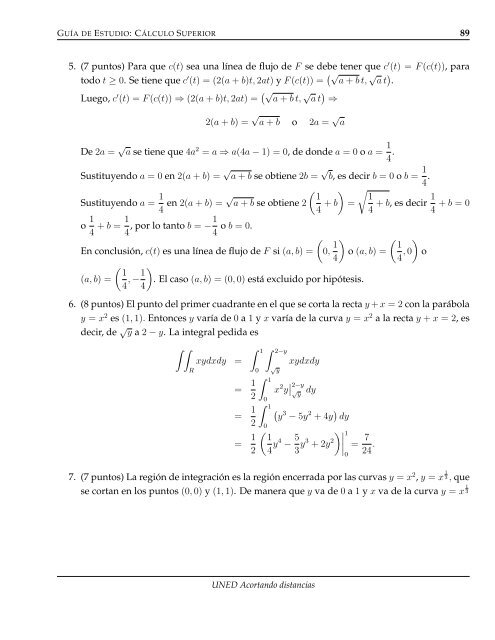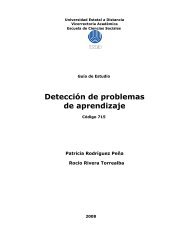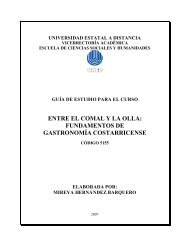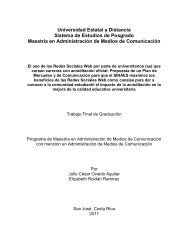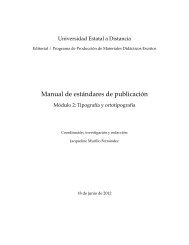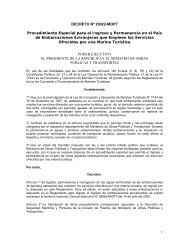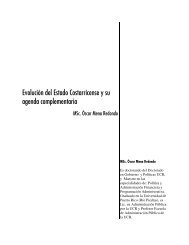GE3011 Cálculo Superior - Repositorio de la Universidad Estatal a ...
GE3011 Cálculo Superior - Repositorio de la Universidad Estatal a ...
GE3011 Cálculo Superior - Repositorio de la Universidad Estatal a ...
Create successful ePaper yourself
Turn your PDF publications into a flip-book with our unique Google optimized e-Paper software.
GUÍA DE ESTUDIO: CÁLCULO SUPERIOR 89<br />
5. (7 puntos) Para que c(t) sea una línea <strong>de</strong> flujo <strong>de</strong> F se <strong>de</strong>be tener que c ′ (t) = F (c(t)), para<br />
todo t ≥ 0. Se tiene que c ′ (t) = (2(a + b)t, 2at) y F (c(t)) = √ a + b t, √ a t .<br />
Luego, c ′ (t) = F (c(t)) ⇒ (2(a + b)t, 2at) = √ a + b t, √ a t ⇒<br />
2(a + b) = √ a + b o 2a = √ a<br />
De 2a = √ a se tiene que 4a 2 = a ⇒ a(4a − 1) = 0, <strong>de</strong> don<strong>de</strong> a = 0 o a = 1<br />
4 .<br />
Sustituyendo a = 0 en 2(a + b) = √ a + b se obtiene 2b = √ b, es <strong>de</strong>cir b = 0 o b = 1<br />
4 .<br />
Sustituyendo a = 1<br />
4 en 2(a + b) = √ <br />
1 1<br />
1<br />
a + b se obtiene 2 + b = + b, es <strong>de</strong>cir + b = 0<br />
4 4 4<br />
o 1 1<br />
+ b = , por lo tanto b = −1 o b = 0.<br />
4 4 4<br />
<br />
En conclusión, c(t) es una línea <strong>de</strong> flujo <strong>de</strong> F si (a, b) = 0, 1<br />
<br />
1<br />
o (a, b) = , 0 o<br />
4<br />
4<br />
<br />
1<br />
(a, b) = , −1 . El caso (a, b) = (0, 0) está excluido por hipótesis.<br />
4 4<br />
6. (8 puntos) El punto <strong>de</strong>l primer cuadrante en el que se corta <strong>la</strong> recta y + x = 2 con <strong>la</strong> parábo<strong>la</strong><br />
y = x 2 es (1, 1). Entonces y varía <strong>de</strong> 0 a 1 y x varía <strong>de</strong> <strong>la</strong> curva y = x 2 a <strong>la</strong> recta y + x = 2, es<br />
<strong>de</strong>cir, <strong>de</strong> √ y a 2 − y. La integral pedida es<br />
<br />
R<br />
xydxdy =<br />
= 1<br />
2<br />
= 1<br />
2<br />
= 1<br />
2<br />
1 2−y<br />
xydxdy<br />
√<br />
0 y<br />
1<br />
x<br />
0<br />
2 y 2−y √ dy y<br />
1<br />
0<br />
y 3 − 5y 2 + 4y dy<br />
1<br />
4 y4 − 5<br />
3 y3 + 2y 2<br />
1 <br />
0<br />
= 7<br />
24 .<br />
7. (7 puntos) La región <strong>de</strong> integración es <strong>la</strong> región encerrada por <strong>la</strong>s curvas y = x2 , y = x 1<br />
3 , que<br />
se cortan en los puntos (0, 0) y (1, 1). De manera que y va <strong>de</strong> 0 a 1 y x va <strong>de</strong> <strong>la</strong> curva y = x 1<br />
3<br />
UNED Acortando distancias


